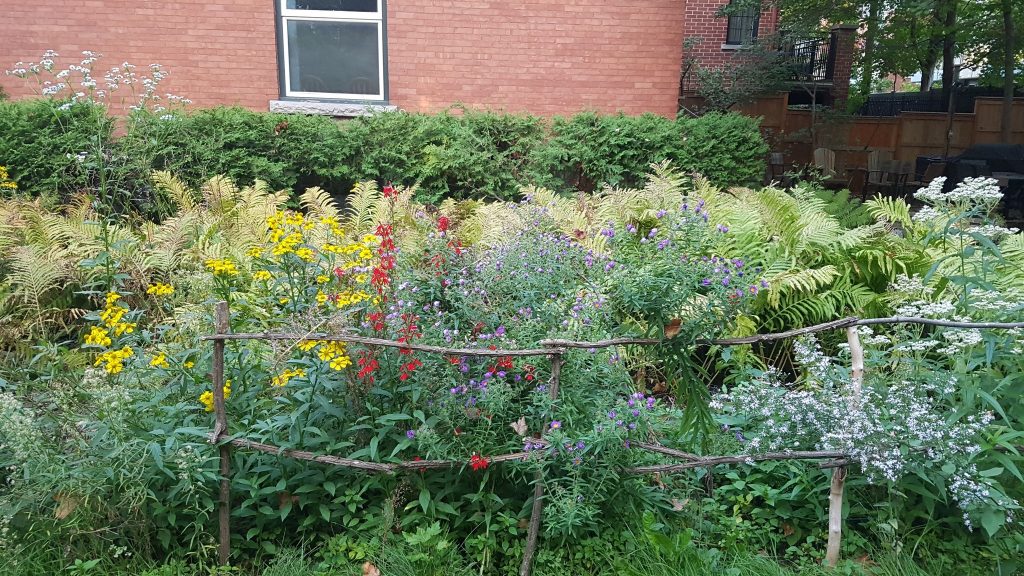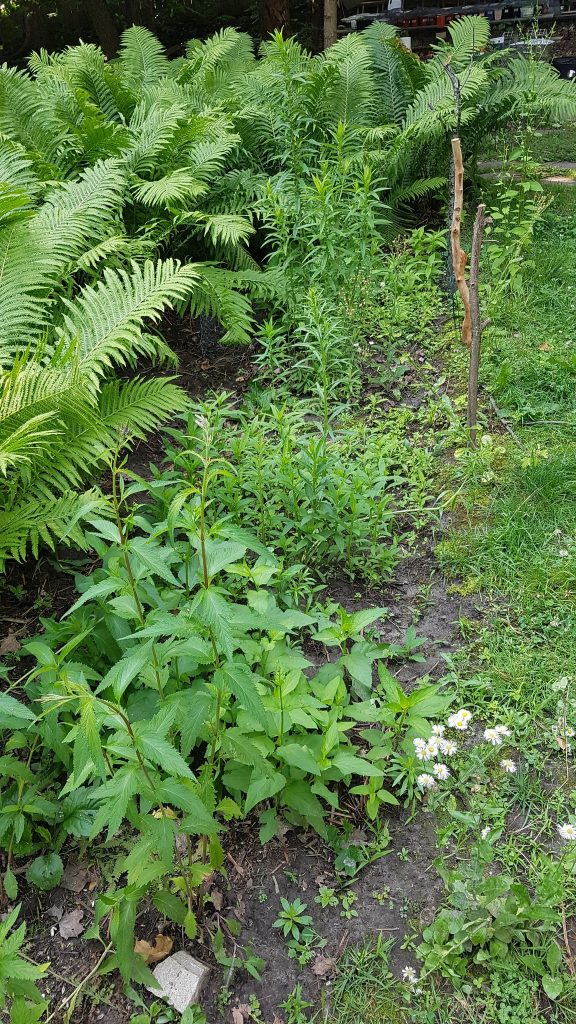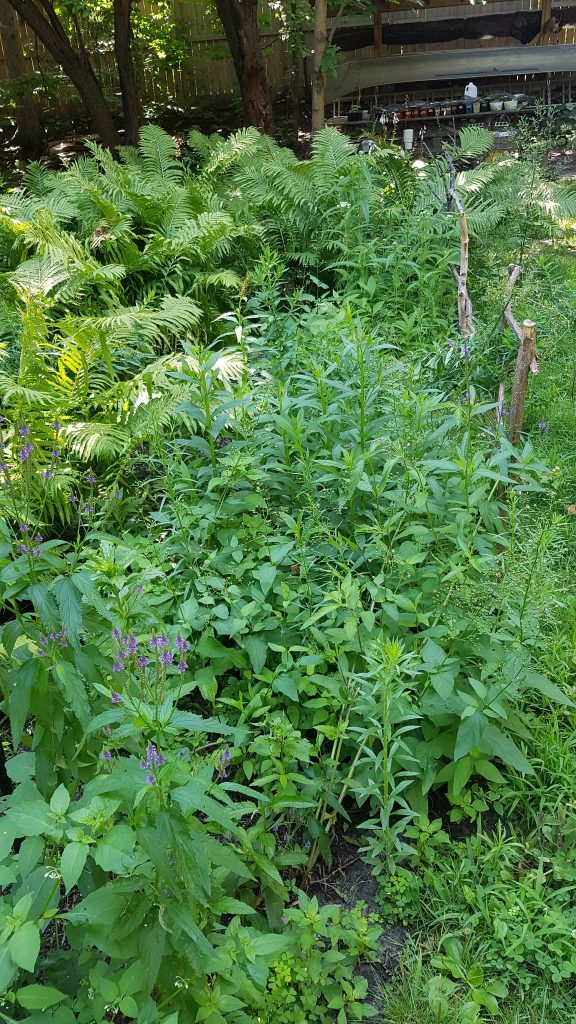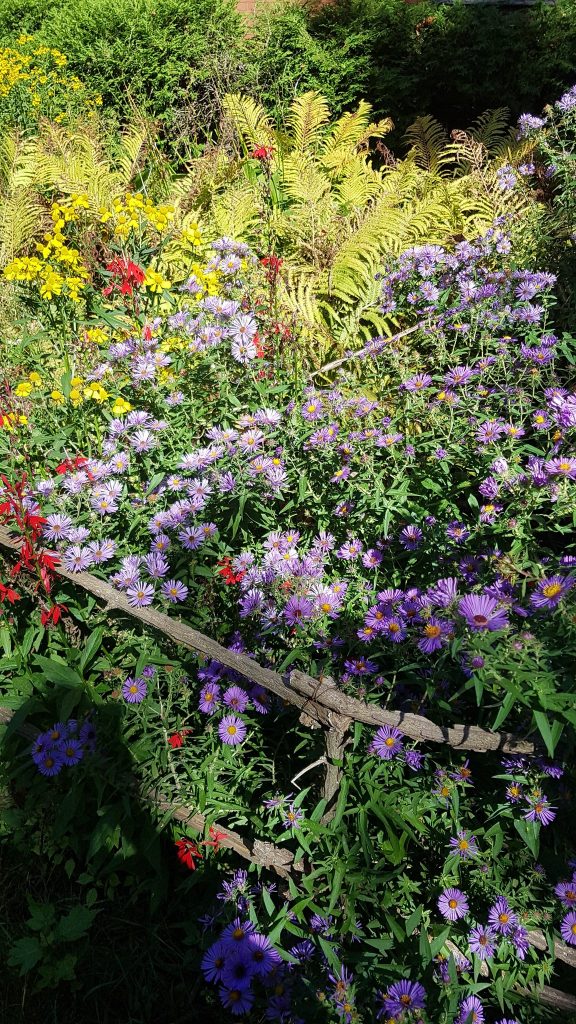by Daxton Rhead
Since 2021, I have been working to remove invasive plants and plant native species in our yard to attract more wildlife. It has been incredibly rewarding to see the garden go from something created just for human eyes to something that supports much more life. I have grown most of my native plants from seed shared through the Ottawa Wildflower Seed Library.

A side view of the patch, shows now-tall fleabane at the left, then Sneezeweed, Cardinal Flower, New England Asters, and Heart-leaved Aster at the right. Although yellowing, the Ostrich Ferns made a great background for the colourful fall-blooming native plants.
This area of the garden used to be orange daylilies. In 2022, I dug up a small section and planted New England Asters. That fall, I dug up the rest of the area to make space for the native plant seedlings I had left over from winter sowing. I was not sure they would all make it through the winter since the seedlings were quite small. I like to plant quite densely, so there is no space for weeds. I want to squeeze in as many plants as I can. I was really happy with how the garden took off this year.
This is the sunniest part of the yard; I would say it’s full sun. Compared with the daylily patch, there are so many more insects and birds!
I would like to add more grasses. I planted a few Little Bluestem seedlings this year, but my “garden helper” has a tendency to eat most grasses to the ground. I have managed to keep some Mexican Muhly grass alive elsewhere in the yard by putting it further back in the garden bed so that’s what I am
hoping will help the Little Bluestem. I also added some Early Goldenrod and Golden Alexander seedlings to this area this past spring so I am excited to see how it looks next year!
I built the fence with branches I had lying around, mostly from Burning Bushes I removed this past spring elsewhere in they yard. The original goal was to stop dogs from running through the garden, but the fence has also helped support some of the plants. I will have to see how it holds up over the winter.
Species: Philadelphia Fleabane (volunteer), Heart-leaved Aster (volunteer), Daisy Fleabane, which bloomed until end of October (volunteer), Sneezeweed, Blue Vervain, Figwort (grew both early and late), Common Boneset, New England Aster, Cardinal Flower, Joe-pye Weed (barely flowered this year), ferns in the background are Ostrich Ferns.
We’re hoping to follow Daxton’s garden next year, to note changes and learn how a wildflower garden evolves.





